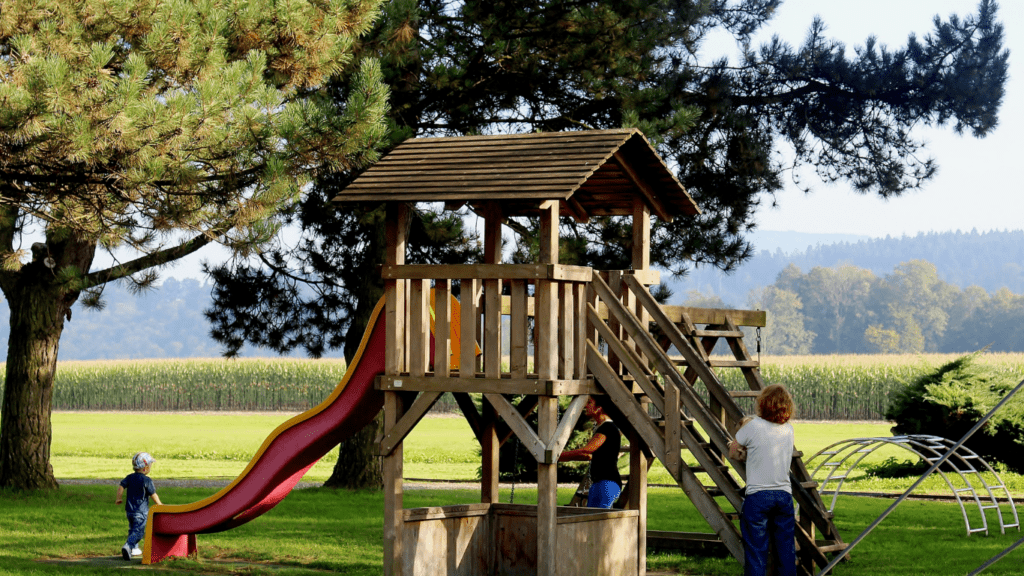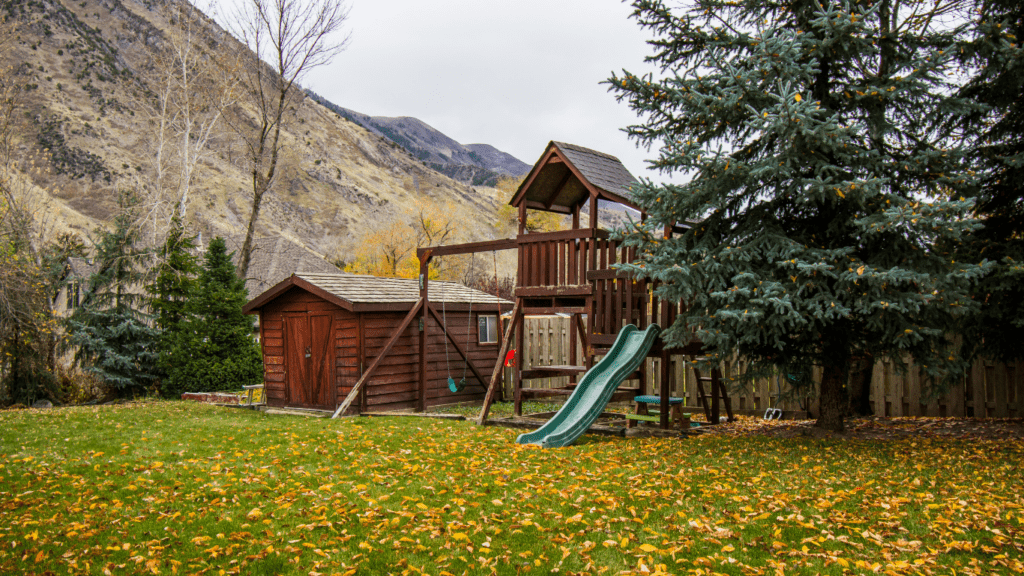As a parent, I know how important it is to keep our kids safe while they enjoy the great outdoors. Backyard playtime can be filled with laughter and adventure, but it also comes with its own set of risks. From playground equipment to hidden hazards, ensuring a safe environment is crucial for peace of mind.
Importance Of Backyard Safety
Backyard safety plays a crucial role in ensuring children’s well-being during outdoor play. Active supervision significantly reduces risks, making it vital for parents to monitor their kids closely. Secure play areas promote better play experiences, especially when equipped with safety measures like soft ground coverings or safe playground structures.
Understanding potential hazards enhances safety awareness. Common dangers include sharp objects, poisonous plants, and exposed electrical wires. Removing these hazards from the play area can prevent serious injuries.
Establishing clear rules for outdoor play encourages safe behavior. Children must understand the importance of following safety guidelines, including not running near pools or climbing fences. Regularly teaching these rules helps reinforce safe practices.
Proper equipment maintenance is essential for safety. Regularly inspecting playground equipment ensures it remains in good condition. Fixing damaged equipment immediately prevents accidents.
Creating a safe environment extends to the entire yard. Fencing restricts access to potential dangers like pools or busy roads. Offering shaded areas protects kids from sunburn while providing comfortable play spaces.
By prioritizing backyard safety, I can ensure my kids enjoy outdoor activities while minimizing potential risks.
Common Backyard Hazards
Backyards can harbor various hazards that pose risks during children’s outdoor play. Identifying these hazards is essential to ensure a safe play environment.
Tripping Hazards
Uneven surfaces, tree roots, and exposed wires often lead to tripping. I regularly inspect pathways and play areas, looking for cracks or protrusions. I remove any potential obstacles like toys or gardening equipment, ensuring clear walkways.
Regularly maintaining the lawn and trimming shrubs can further reduce tripping risks.
Toxic Plants
Certain plants like poison ivy, nightshade, and oleander pose toxic threats. I familiarize myself with harmful plant species in my yard and remove them promptly. Educating children about identifying these plants helps them avoid contact.
Establishing a designated play area free from these plants promotes a safer environment.
Water Safety
Water features, such as pools and ponds, can lead to drowning incidents. I secure these areas with sturdy fencing and self-latching gates to prevent unauthorized access. Teaching children swimming skills and water safety rules is crucial.
I supervise kids closely during water play, ensuring they understand the importance of never playing near water unsupervised.
Creating A Safe Play Environment
Creating a safe play environment is essential for kids to enjoy their outdoor activities without unnecessary risks. Key elements include appropriate boundaries, safe equipment, and vigilant supervision.
Fencing And Boundaries
Fencing consistently defines play areas, preventing children from wandering into potentially dangerous zones, such as streets or neighbor’s yards. Solid fencing at least 4 feet high deters small children from climbing over.
Gates should close securely and latch well to keep kids safe. Clearly marking boundaries within the yard establishes designated play areas, fostering a sense of security during playtime.
Safe Play Equipment
Safe play equipment must meet safety guidelines. When selecting items like swings, slides, and climbing structures, choose those with safety certifications from recognized organizations. Secure equipment to prevent tipping, and ensure surfaces beneath are padded with materials like mulch or rubber mats.
Regularly inspect for wear and tear, fixing any loose fittings or sharp edges. Teaching kids proper use of equipment minimizes accidents and reinforces safety behaviors.
Supervision Strategies
Active supervision remains critical during outdoor play. Be present within view and engage with your children while they play. Establish specific rules about safe play practices, such as not pushing or diving off play structures.
Rotate supervision duties amongst caregivers for extended play dates, ensuring someone is always watching. Set clear expectations regarding behavior, helping reinforce safety principles during playtime.
Teaching Kids About Safety
Teaching kids about safety during outdoor play helps establish a strong understanding of risk management. By instilling safety habits early, I can ensure they enjoy their time outside while remaining protected.
Rules Of Outdoor Play
Establishing clear rules for outdoor play protects kids from potential hazards. I focus on consistent guidelines, including:
- Stay Within Boundaries: Kids must play in designated areas, preventing wandering into dangerous zones.
- Respect Equipment: Teach children to use playground equipment properly to avoid accidents.
- No Rough Play: Encourage gentler activities to prevent injuries from falls or collisions.
- Buddy System: Kids should always play with friends to ensure help is readily available if needed.
Consistent reinforcement of these rules helps children internalize safe behaviors while having fun outdoors.
Importance Of Communication
Effective communication enhances children’s understanding of safety. I prioritize open dialogue about potential hazards and proper behaviors. Key communication strategies include:
- Regular Safety Talks: Discuss safety guidelines frequently to keep them top-of-mind.
- Listening to Concerns: Encourage kids to express fears or observations about their environment.
- Modeling Safe Behavior: Demonstrating safety practices solidifies their understanding of rules.
- Encouraging Questions: Invite inquiries about safety to foster curiosity and understanding.
By creating an environment that values communication, I empower my children to take charge of their safety during outdoor adventures.



